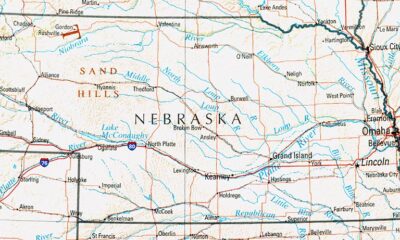Executive
The Silver Lining in 10 Energy Predictions I’ve Made I Wish I’d Been Wrong About
The silver lining in 10 dire energy predictions that came true, is that we can vote out the ones who made them come true.

For the past several years, I’ve been warning about the effects misguided energy policies will have on the reliability and affordability of our energy. As we head into a presidential election in November, Consumer Energy Alliance took stock of where things stand since January 2021.
Energy failure predictions have come to pass
Unfortunately, we were worried that many of the predictions we’ve made over the past three years would come to pass, and they have, with prices rising higher and energy becoming less reliable. This predictably sad state of affairs first strikes those among us least able to withstand the blow, meaning our senior citizens, our fellow Americans in poverty or with low incomes.
Fortunately, we are a democracy and we can vote for a change in direction, vote for a change that helps those Americans who need it most, and vote for elected leaders – regardless of party – who are willing to rise above outdated perceptions about energy that try to divide us into the “either energy/or environment” camps.
It’s clear that binary proposition has failed Americans, and many are seeing past the rhetoric, disingenuous talk and outright ignorance of facts and physics to see the truth: we can have affordable, reliable and clean energy without compromise. It’s not “either/or” it is “and/both!”
To make that change, we have to choose elected leaders – Republican, Democrat or Independent – who show an understanding of energy and why energy choice is vital to putting people first. That’s the silver lining I see amid a lot of real storm clouds we’re fighting our way through right now as a nation.
Energy less affordable
Affordability has in no uncertain terms decreased since January 2021, and continues to trend in the wrong direction as the effects of policies we warned would cause price increases begin to do just that. There is often a time lag between the time a policy is put in place and when it begins to affect energy prices, and there is a second-order effect once the price of energy factors into goods and services – especially food production and delivery.
The challenge with any policy that attempts to outlaw one form of energy or another is that it often defies reality, physics and real-world cost implications.
The score
Let’s look at the scorecard right now in terms of affordability and reliability, two of the three legs of the energy stool, the last being clean and environmentally responsible:
- Energy prices have risen 29% since 2021. That’s along with a Consumer Price Index that produced the highest inflation since the 1980s, higher interest rates and grocery bills that continue to shock families.
- Electricity’s cost has risen at its fastest rate in a generation. That price increase is 8% on a three-year annualized basis, as the costs of government mandates come home to roost in our bills. That’s only going to get worse with the surge in electricity demand driven by the growth in data centers to accommodate artificial intelligence. For perspective, the current price growth is almost as bad as it was after the Iranian revolution triggered an oil crisis in 1979-80, according to BofA Securities. That caused the price of a barrel of oil to double to the equivalent of more than $100 a barrel in today’s money, and we are feeling a similar effect in our electricity bills.
- Almost a third of Americans (32%) are using financing – meaning their credit cards, payment assistance, loans or payment programs just to be able to afford their energy bills. This is one step away from a pawn-shop or payday loan style economy for many of our less fortunate fellow citizens. What this does is force people to make difficult choices every single day.
Fueling inflation
- To wit: Nearly one in four Americans (24%) are forgoing other essentials to pay their energy bills.
- One in six families is behind on their energy bills. This sets up a spiral of missed bills, and all the implications that come with it, including damage to their credit scores, other missed bills and less discretionary income for fun, entertainment, gifts and everything else we go to work for every day.
- While we all feel inflation every single day, let’s consider the implications for our nation’s security. The cost for fueling our military rose by 39% from 2021-23, according to the Defense Logistics Agency. Congress had to authorize an additional $2.5 billion to cover the cost from inflation for FY 2023’s budget, according to the Senate Armed Services Committee.
When considering the ripple affect energy has on the economy, consider the price of groceries, clothing, household supplies, and any other commodity driven by diesel truck. Diesel is $1.20 per gallon more today that it was in early 2021. That added costs is transformed into virtually everything we buy. Then factor in the added cost to farmers, manufacturers, packagers, etc… and it is a straight and obvious link to the fact that higher energy prices have added to our current record (and persistent) inflation.
Reliability
The reliability of our energy – especially electricity – is faring little better. We urgently need a national conversation about how we ensure reliability and affordability remain priorities going forward, especially since the surge in demand from artificial intelligence and cryptocurrency is driving the highest growth forecasts in a decades. And we are starting from a weakened state:
- Power disruptions have more than doubled from 2016-2022, according to the Department of Energy’s (DOE) database of grid disruptions. The year 2022 saw the high watermark, with a then-record 390 outages despite having fewer weather-related events than prior years. Unfortunately, this can be deadly if outages are sustained, as happened in my city, Houston, after Hurricane Beryl when more than a million were out of power weeks after the storm. This has prompted tough questions that I’m optimistic will create a critical dialogue about why we need to ensure our grid is strong, robust and resilient across the country.
- Alas, it is not. The grid’s watchdog, the North American Electric Reliability Corporation, estimates that seven large swathes of the U.S. and Canada are at an elevated risk of blackouts in the hottest weather this year. That mirrors a similar warning from its winter update last year, and it is becoming a trend.
When energy runs out…
- All of this matters to the economy, since the DOE estimates that power outages cost businesses $150 billion annually – and that is a figure which has not been updated in roughly a decade. It may get worse before it gets better, because of the creaking grid we have that is already being pushed to its limits because of the rush of new technologies onto it. That problem is compounded by regulatory frameworks which hinder investment into reliability or force early retirements of still-usable generation assets.
- AI and the associated power use and data center demand are expected to drive demand increases not seen since the early 21st century. Data center demand is expected to more than double to 8% of U.S. demand by 2030 from 3% in 2022, which will require $50 billion in utility investment into new generation just to meet the data center needs – and that does not include the normal demand growth. It’s pretty obvious why, since a single ChatGPT search uses 10 times the power of a Google search.
- With things standing as they are now, we each must decide whether we want to continue on the same path of the past three years, or opt for a more reasoned, sensible and reality-based approach that ensures our energy is reliable, affordable and clean.
Are you better off now, and will you be better off in future?
This is not a partisan choice, but a choice of perspective. As you consider your options in November, ask that old question – are you better off now than you were four years ago – and add a new twist: will my future be better, my energy cheaper and more reliable?
That should help clarify the path we want to take, and whether we’d rather our energy serve us and our economy, or cost us and our financial success. It’s an easy choice.
This article was originally published by RealClearEnergy and made available via RealClearWire.
David Holt is president of Consumer Energy Alliance, a U.S. consumer energy and environment advocate supporting affordable, reliable energy for working families, seniors and businesses across the country.
-

 Clergy3 days ago
Clergy3 days agoThrough All Of The Media Distractions, You Are Being Incrementally Dispossessed! Look At The Countries That Are Now Overrun By Immigrants
-

 Civilization4 days ago
Civilization4 days agoThe Art of the Iran Deal
-

 Civilization2 days ago
Civilization2 days agoHear O Israel — How do I hate thee?
-

 Civilization5 days ago
Civilization5 days agoSpring elections – mixed results
-

 Executive3 days ago
Executive3 days agoLaura Loomer prompts NSC housecleaning
-

 Executive4 days ago
Executive4 days agoTariffs, trade, and taxes
-

 Entertainment Today2 days ago
Entertainment Today2 days agoThe Chosen – timely and timeless
-

 Executive5 days ago
Executive5 days agoWaste of the Day: Over $1 Billion for Foreign Shrimp












